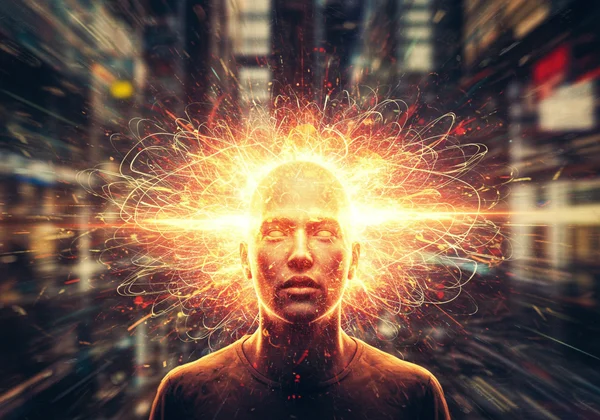Manic & Hypomanic Episodes: Signs, Symptoms & When to Consider a Bipolar Disorder Test
Have you ever experienced periods of intense energy, sleepless nights, or racing thoughts that felt exhilarating but eventually spiraled out of control? Or perhaps observed this in a loved one? Mania and hypomania are hallmark experiences of bipolar disorder, often misunderstood or mistaken for exceptionally high spirits. These intense mood states are more than just feeling happy; they are significant shifts in energy, thought, and behavior that can deeply affect someone's life. Here, we'll explore what these episodes truly feel like, provide clear clinical signs, and share anonymized personal stories to help you better understand these complex mood states. If you're seeking clarity, a Bipolar Disorder Test can be a valuable first step.
Understanding Mania: What a Full Episode Feels Like
A manic episode is the "high" of bipolar I disorder. It's an intense and disruptive period of elevated, expansive, or irritable mood and abnormally increased energy or activity, lasting for at least one week. This isn't just a good mood; it's a state that often impairs judgment and can lead to significant problems in work, social life, and relationships. It can feel powerful and exciting at first, but it frequently becomes overwhelming and distressing.

The Euphoric High & Unstoppable Energy
Imagine feeling so euphoric that you believe you can achieve anything. Thoughts race through your mind a mile a minute—a phenomenon often called "flight of ideas." You may feel little to no need for sleep, staying awake for days on end working on grand projects or engaging in multiple activities at once. This isn't just having extra energy; it's a relentless, supercharged drive that feels both limitless and impossible to switch off. Many describe it as their brain having too many tabs open, all playing different videos at full volume.
Irritability, Recklessness, and Impaired Judgment
While euphoria is a common feature of mania, so is extreme irritability. The same racing thoughts that fuel creativity can make a person easily agitated, impatient, and prone to angry outbursts if their plans are interrupted. This high-energy state often leads to poor decision-making and reckless behavior. This might manifest as lavish spending sprees, impulsive business decisions, or engaging in risky sexual encounters. During a manic episode, the part of the brain responsible for recognizing consequences seems to go offline, leading to actions that can have lasting negative effects.
Real Stories: Voices from Manic Experiences
To truly grasp mania, consider this anonymized story inspired by real experiences:
Leo, a graphic designer, hadn't slept for three days. He was convinced he had unlocked a revolutionary design principle that would change the industry. He spent thousands on new equipment, maxing out his credit cards. He called old clients at 3 a.m. to pitch his new vision, his speech so fast it was nearly incoherent. When his partner gently suggested he rest, Leo exploded with anger, accusing her of trying to sabotage his genius. The initial thrill had morphed into something frightening and isolating. For Leo, the episode ended in hospitalization, followed by a period of deep depression and regret over his actions.
If this story feels familiar, a confidential bipolar screening questionnaire can help you explore your own mood patterns.
Recognizing Hypomania: More Than Just "Feeling Good"
Hypomania is often described as a less severe form of mania. It involves the same types of symptoms—elevated mood, increased energy, and a decreased need for sleep—but they are less intense and must last for at least four consecutive days. Crucially, a hypomanic episode does not cause the same level of impairment in daily functioning as a full manic episode and never involves psychotic features. For many, hypomania can even feel productive and positive, making it much harder to recognize as a potential symptom of a mood disorder like bipolar II.

Key Signs of Hypomanic Episodes
Recognizing hypomania requires looking for a distinct change from your usual self. Key signs include:
- Elevated Self-Esteem: Feeling unusually confident, witty, and charming.
- Increased Productivity: A surge in goal-directed activity at work, school, or socially.
- Greater Talkativeness: Speaking more rapidly and more often than usual.
- Racing Thoughts: Mind feels faster, but thoughts are typically more coherent than in mania.
- Reduced Need for Sleep: Feeling rested and energetic after only a few hours of sleep.
Hypomania vs. Mania: The Crucial Differences
The distinction between hypomania and mania is critical for understanding one's experience and for a potential diagnosis. Here’s a simple breakdown:
-
Severity: Mania is severe and causes significant impairment in your ability to function (e.g., you can't go to work, relationships are in jeopardy). Hypomania is a noticeable change but is not severe enough to cause major life disruption.
-
Duration: A manic episode lasts at least seven days, whereas hypomania lasts at least four days.
-
Hospitalization: Mania can be so severe it requires hospitalization to ensure safety. Hypomania, by definition, does not.
-
Psychosis: Mania can include psychotic symptoms like delusions or hallucinations. Hypomania does not.

A free bipolar disorder test can help you reflect on whether your experiences align more with mania or hypomania.
Real Stories: Navigating Hypomanic Highs
Consider the story of Maya, an accountant:
During what she called her "super weeks," Maya would feel on top of the world. She'd clean her entire apartment, finish a month's worth of reports at work, and socialize every night, all while running on four hours of sleep. Her friends just thought she was an energetic extrovert. But these highs were always followed by weeks of crushing depression where she could barely get out of bed. The hypomanic periods felt good—even desirable—so she never considered them part of a problem until the pattern became undeniable.
Why Recognizing These Episodes Matters for Your Health
Ignoring the signs of mania or hypomania means overlooking crucial information about your mental health. These mood episodes are not just personality quirks; they are often indicators of an underlying condition that benefits greatly from management and support.
The Impact on Daily Life and Relationships
Untreated manic or hypomanic episodes can create a cycle of instability. The impulsive decisions made during a high can lead to financial debt, job loss, and broken trust in relationships. The inevitable crash into depression that often follows can be debilitating. For loved ones, witnessing these shifts can be confusing, frightening, and exhausting, straining even the strongest bonds. Recognizing these patterns is the first step toward finding stability and healing.
The Path to Clarity: Self-Screening and Professional Help
If these descriptions resonate with you, the journey to clarity doesn't have to be overwhelming. A great first step is to take an online bipolar disorder test. The free and confidential screening tool at our site is inspired by established psychiatric instruments like the Mood Disorder Questionnaire (MDQ). It's not a diagnosis, but it provides valuable preliminary insights into your mood patterns. This information can help you have a more informed conversation with a healthcare professional, who can provide a comprehensive evaluation.

Your Path to Clarity and Support
Understanding manic and hypomanic episodes is a crucial step toward finding clarity about your mental health or that of a loved one. These aren't just extreme moods; they are significant indicators that warrant attention. The euphoria of a high can feel empowering, but the potential for negative consequences and the subsequent crash into depression highlight the importance of awareness and support.
If anything in these descriptions resonates with your experiences, remember that you are not alone in this journey. Our platform offers a fast, confidential self-screening inspired by psychiatric instruments to help you take that crucial first step. Taking this initial step can provide valuable insights and empower you to seek the professional support you deserve.
Frequently Asked Questions About Manic & Hypomanic Episodes
What are the 5 signs of bipolar disorder?
Bipolar disorder is characterized by shifts between elevated and depressed moods. Five common signs include: 1) Manic/Hypomanic Episodes (elevated energy, racing thoughts, decreased sleep), 2) Depressive Episodes (low mood, loss of interest, fatigue), 3) Extreme Irritability, 4) Impulsive or Risky Behavior, and 5) Significant Changes in Sleep Patterns and Energy Levels.
What is commonly mistaken for bipolar disorder?
Several conditions have overlapping symptoms. Bipolar disorder is often mistaken for Major Depressive Disorder (if hypomania goes unnoticed), Attention-Deficit/Hyperactivity Disorder (ADHD) due to symptoms like distractibility and impulsivity, and Borderline Personality Disorder (BPD), which also involves mood instability and impulsivity, though the mood shifts in BPD are typically much more rapid.
Is there a test for bipolar disorder?
There is no single blood test or brain scan that can diagnose bipolar disorder. A diagnosis is made by a qualified mental health professional through a comprehensive evaluation of your symptoms, experiences, and family history. However, a screening tool, like the bipolar disorder self test offered on our site, is an excellent starting point. It can help you organize your thoughts and decide if seeking a professional evaluation is the right next step for you.
Disclaimer: This article is for informational purposes only and does not constitute medical advice. The content is not intended to be a substitute for professional medical advice, diagnosis, or treatment. Always seek the advice of a qualified health provider with any questions you may have regarding a medical condition. The screening tool provided here is not a diagnostic tool.